Solar eclipse of May 31, 2068
| Solar eclipse of May 31, 2068 | |
|---|---|
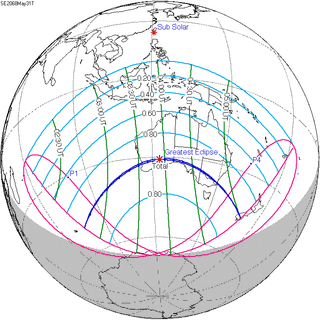 Map | |
| Type of eclipse | |
| Nature | Total |
| Gamma | -0.797 |
| Magnitude | 1.011 |
| Maximum eclipse | |
| Duration | 66 sec (1 m 6 s) |
| Coordinates | 31°00′S 123°12′E / 31°S 123.2°E |
| Max. width of band | 63 km (39 mi) |
| Times (UTC) | |
| Greatest eclipse | 3:56:39 |
| References | |
| Saros | 148 (24 of 75) |
| Catalog # (SE5000) | 9660 |
A total solar eclipse will occur on May 31, 2068. A solar eclipse occurs when the Moon passes between Earth and the Sun, thereby totally or partly obscuring the image of the Sun for a viewer on Earth. A total solar eclipse occurs when the Moon's apparent diameter is larger than the Sun's, blocking all direct sunlight, turning day into darkness. Totality occurs in a narrow path across Earth's surface, with the partial solar eclipse visible over a surrounding region thousands of kilometres wide.
Related eclipses
Solar eclipses 2065-2069
Each member in a semester series of solar eclipses repeats approximately every 177 days and 4 hours (a semester) at alternating nodes of the Moon's orbit.
| 118 | July 3, 2065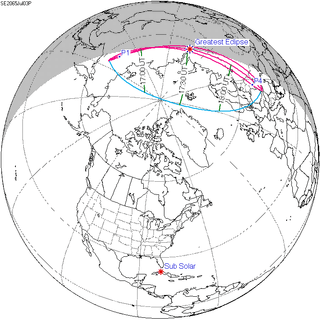 Partial |
123 | December 27, 2065 Partial |
| 128 | June 22, 2066 Annular |
133 | December 17, 2066 Total |
| 138 | June 11, 2067 Annular |
143 | December 6, 2067 Hybrid |
| 148 | May 31, 2068 Total |
153 | November 24, 2068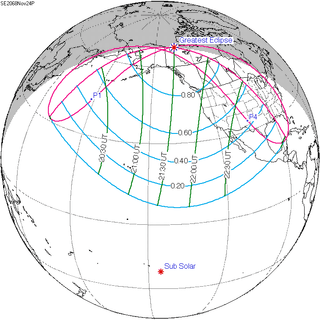 Partial |
| 158 | May 20, 2069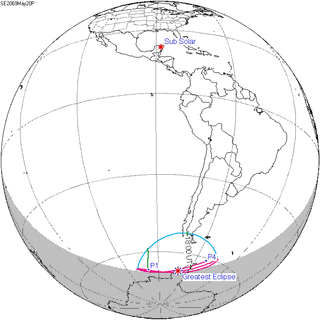 Partial |
Metonic series
The metonic series repeats eclipses every 19 years (6939.69 days), lasting about 5 cycles. Eclipses occur in nearly the same calendar date. In addition the octon subseries repeats 1/5 of that or every 3.8 years (1387.94 days).
| 21 eclipse events between June 1, 2011 and June 1, 2087 | ||||
|---|---|---|---|---|
| May 31 – June 1 | March 19–20 | January 5–6 | October 24–25 | August 12–13 |
| 118 | 119 | 121 | 123 | 125 |
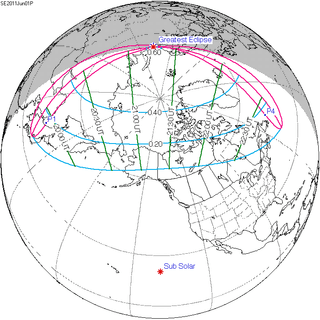 June 1, 2011 |
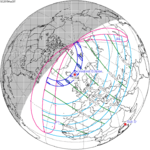 March 20, 2015 |
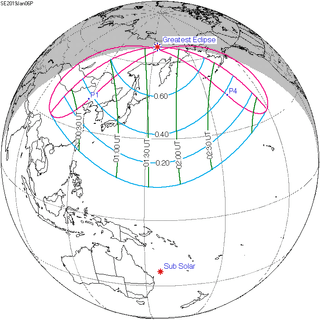 January 6, 2019 |
 October 25, 2022 |
 August 12, 2026 |
| 128 | 129 | 131 | 133 | 135 |
 June 1, 2030 |
 March 20, 2034 |
 January 5, 2038 |
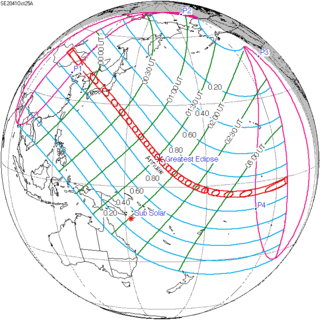 October 25, 2041 |
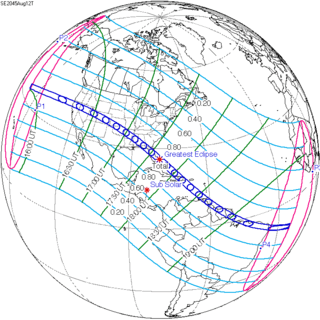 August 12, 2045 |
| 138 | 139 | 141 | 143 | 145 |
 May 31, 2049 |
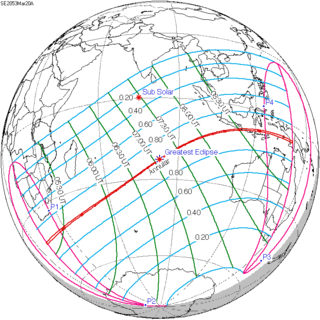 March 20, 2053 |
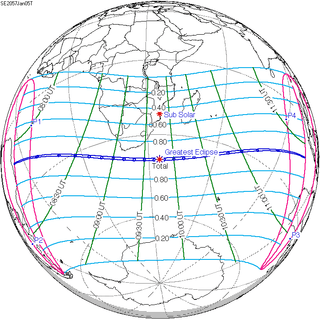 January 5, 2057 |
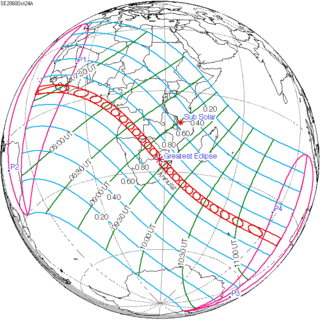 October 24, 2060 |
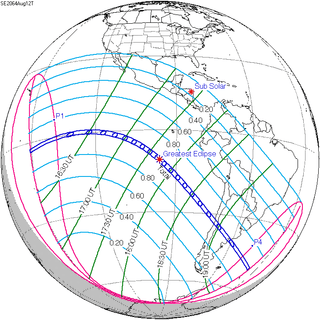 August 12, 2064 |
| 148 | 149 | 151 | 153 | 155 |
 May 31, 2068 |
 March 19, 2072 |
 January 6, 2076 |
 October 24, 2079 |
 August 13, 2083 |
| 157 | ||||
 June 1, 2087 | ||||
Notes
References
- Earth visibility chart and eclipse statistics Eclipse Predictions by Fred Espenak, NASA/GSFC
| Wikimedia Commons has media related to Solar eclipse of 2068 May 31. |
